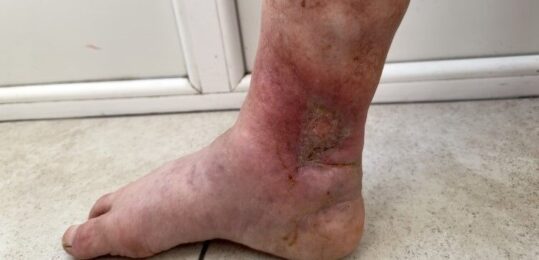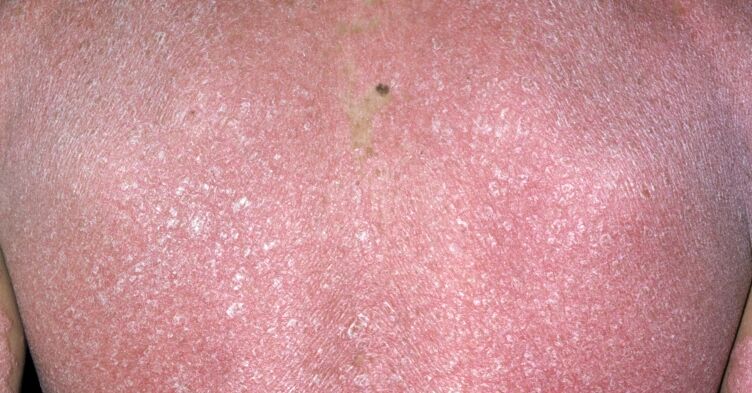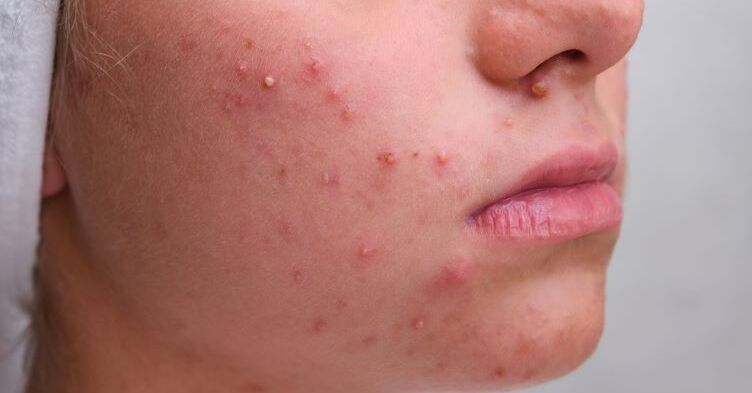Continuing our series dispelling some common myths about conditions managed by nurses in primary care, Dr Peter Bagshaw advises against routine swabbing of venous ulcers
It is quite common for older, housebound patients to have chronic venous ulcers that weep heavily and soak through bandaging quickly. Clinicians will often feel compelled to swab the wound, even in the absence of clinical signs of infection such as pain, temperature or non-healing erythema. The swab will frequently come back positive for bacteria associated with wound infections including Staphylococcus aureus and mixed anaerobes, leading to a request for antibiotics.
However, the reality is that while swabs may indicate colonisation of the ulcer by bacteria, this is not the same as infection. Although traditional teaching and intuition is that the presence of bacteria delays healing, there is actually no evidence for this. Infections need treatment but are diagnosed clinically, so swabbing wastes time and resources, and risks overtreatment.
What’s the evidence on swabbing and venous leg ulcers?
All the papers stress the crucial difference between bacterial colonisation and infection. As Moore states, ‘bacteria can be cultured from all venous leg ulcers regardless of healing status’.1 In a study of weekly sampling of 178 ulcers, they found Staphylococcus aureus in 64.3% of assessments, Corynebacterium striatum in 60.6%, Pseudomonas aeruginosa in 32.6%, and Proteus mirabilis in 16.1%.1 The authors concluded that ‘no single species or the presence of anaerobes and increasing diversity of bacterial species, previously thought to be predictive of impaired healing, was shown to be associated with healing outcome’. A Cochrane review found the same thing.2
NICE is even clearer on this,3 advising that:
- Most leg ulcers are not clinically infected but are likely to be colonised with bacteria.
- Antibiotics do not help to promote healing when a leg ulcer is not clinically infected.
- Offer an antibiotic for adults with a leg ulcer only when there are symptoms or signs of infection.3
When should infection be suspected?
So if antibiotics are only indicated for infection, might swabs be useful in helping us know if a significant infection is present? Apparently not: Finlayson found ‘no studies reporting a significant relationship between clinical signs and symptoms of infection and microbiological results, including the qualitative and quantitative results.’4
He went on to stress that infection is a clinical diagnosis, and found the most useful criteria to be increasing or altered pain in the ulcer area, malodour, increase in ulcer area, wound breakdown, delayed or non-healing, erythema and increase in local temperature. Pain is the most reliable symptom. Blokhuis-Arkes et al came to the same conclusion.5
In line with this, current guidelines recommend that antibacterial preparations should be used only in cases of clinical infection, not for bacterial colonisation.
Routine swabbing is of no benefit and can lead to overtreatment with antibiotics, which carries the risk of promoting drug-resistant bacteria that will be more difficult to treat if the patient does develop a significant infection. If this is an issue in your area, consider discussing a consensus approach. You might arrange an educational session or produce guidelines based on NICE best practice.
Key points
- Antibiotics should only be used for infection, not colonisation.
- Routine swabbing of chronic venous ulcers is of no benefit as they reflect colonisation rather than infection.
- Diagnosing infection is a clinical process, not a bacteriological one.
- Increasing pain is the most reliable pointer to infection, as are malodour, increase in ulcer area, wound breakdown, non-healing erythema and increase in local temperature.
Dr Peter Bagshaw is a GP in Somerset
References
- Moore K et al. Surface bacteriology of venous leg ulcers and healing outcome. J Clin Pathol 2010;63:830-4
- O’Meara S et al. Antibiotics and antiseptics for venous leg ulcers. Cochrane Database of Syst Rev 2014 Jan 10;(1):CD003557
- NICE. Leg ulcer infection: antimicrobial prescribing. 2020
- Finlayson K, Edwards H. The diagnosis of infection in chronic leg ulcers: A narrative review on clinical practice. Int Wound J 2019;16:601-20
- Blokhuis-Arkes M et al. Rapid enzyme analysis as a diagnostic tool for wound infection: Comparison between clinical judgment, microbiological analysis, and enzyme analysis. Wound Repair Regen 2015;23: 345-52






